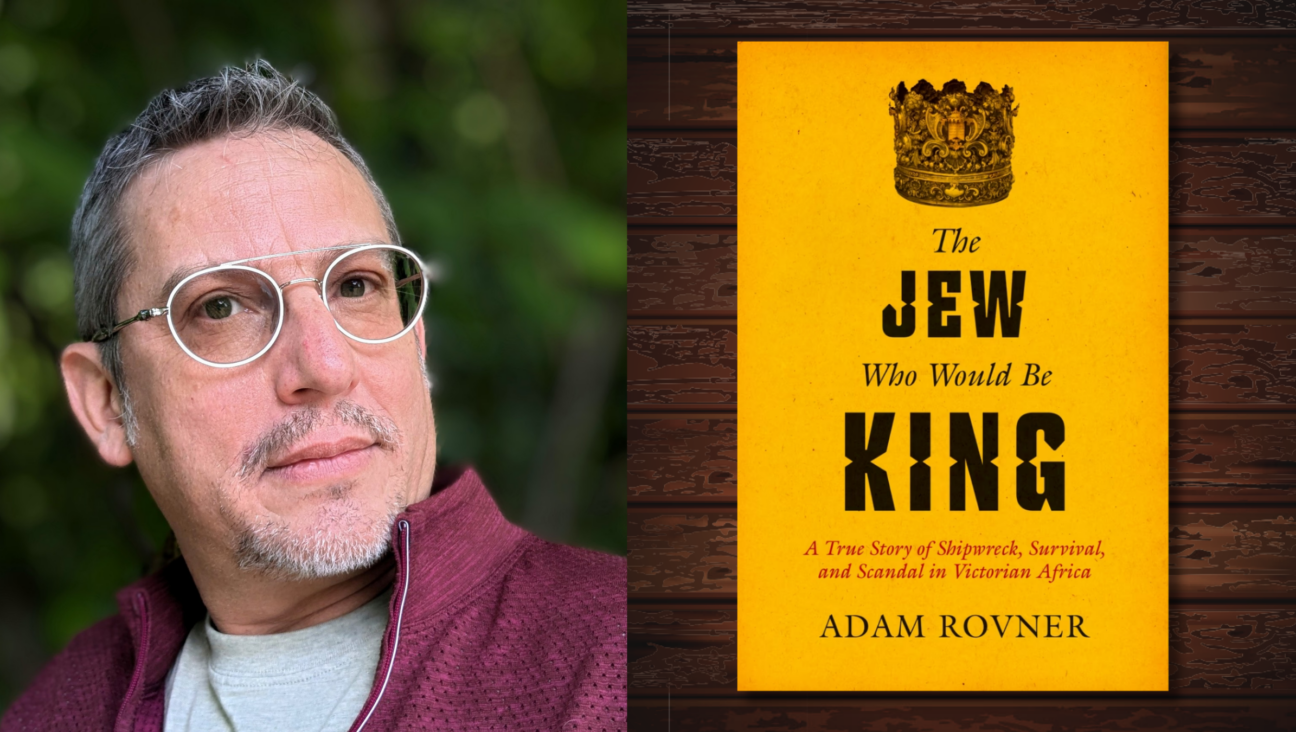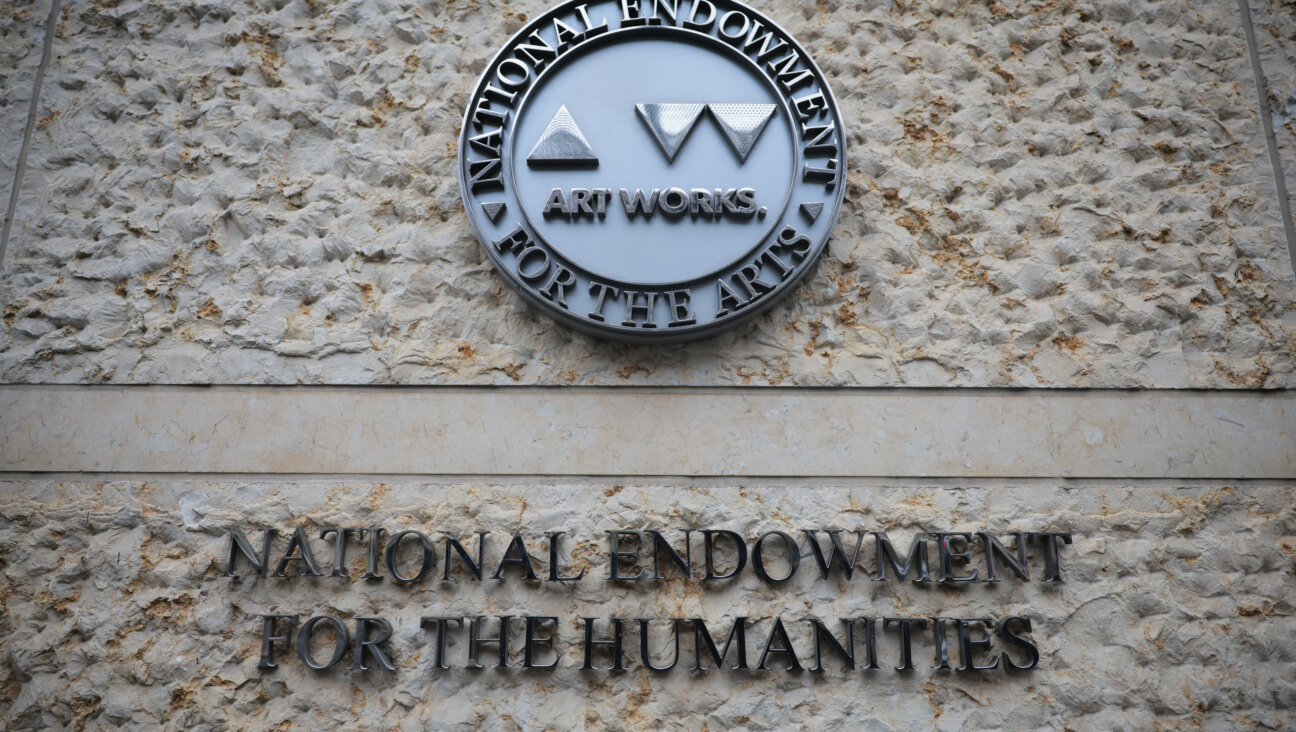One Big, Happy Family
Historically speaking, Jews have hardly been strangers to the art of drawing sharp distinctions among themselves. But according to a mounting body of scientific evidence, Jews — genetically speaking, at least — may have more in common than anyone previously suspected.
A year ago, Michael Seldin, a geneticist at the University of California Davis School of Medicine, and his research team made a remarkable discovery: Studying how Europeans grouped genetically, they found that Ashkenazic Jews formed their own distinct subgroup. Northern and Southern Europeans fell into two clearly separable genetic cohorts, and although the Ashkenazic Jews had more in common with the Southern Europeans, they formed a recognizable, relatively homogenous group of their own.
This finding was particularly striking, as the place of origin for an individual Ashkenazic Jew’s grandparents turned out to be completely irrelevant. “There is no correspondence to the grandparental country of origin,” Seldin remarked: “We see differences in other European populations when, for example, someone says she has four grandparents from Italy versus someone who says he has three grandparents from Italy and one from Germany. But for Ashkenazic Jews, it doesn’t matter if their grandparents are from England or Hungary or Russia or Italy. The only thing that matters is that they’re Ashkenazic Jewish.”
Seldin has been studying the genetics of autoimmune disorders, such as rheumatoid arthritis and lupus, for years. About five years ago, spurred on by recent advances in genetic research and a large reduction in the cost of genetic population studies, Seldin turned to researching the distribution among different populations of the genes causing the diseases he was studying. This sort of information would help researchers understand how the same disease might be expressed differently across different groups, and the information ultimately could lead to more individualized and effective treatment.
Through a series of collaborations with labs around the world, Seldin and his lab began exploring something called “ancestry informative markers,” specific areas of a person’s genetic code that reveal which part of the globe most of his ancestors came from. The study on those of European ancestry, which looked at both Europeans and European Americans, was also an international collaboration. In September 2006, it was published in the Public Library of Science Genetics journal. Since then, Seldin said, he has pursued a second study of an even larger sample of the genetic code, and his original findings for Ashkenazic Jews have only been confirmed.
Seldin’s work is emblematic of a rapidly expanding phenomenon within genetics: research of the genetic roots of diseases that end up revealing something about the history of a particular population.
Population genetics, the study of human migration and community growth through a genetic lens, has been going on for half a century now, but since the completion of the Human Genome Project in 2000, the pace of new findings has accelerated. “It’s an interesting time,” noted Harry Ostrer, director of the human genetics program at the New York University School of Medicine. “There is so much happening, and we are on the verge of so much more.”
Jews are particularly attractive to population geneticists, noted Michael Hammer, a University of Arizona geneticist and a pioneer in Jewish population genetics, because they present an “unusual group.” Despite their widespread wanderings, Jews have remained isolated genetically. At the same time, they have kept extensive medical and historical records. Whereas other populations, such as the Finns or the Amish, have also remained quite isolated over the centuries, “there are not many that you could study so far back,” because of a lack of historical records, Hammer observed. “The genetic record itself is not enough. You need archeology, historical records and medical records. You need to put it all together to get the picture.”
The expanding study of ancestry through genetics, then, is bound to have a particularly strong impact on the understanding of Jewish ancestry — as indeed it already has. Over the past year, two other disease-related studies besides Seldin’s have turned up findings related to Jewish history.
The first, published in this year’s March issue of Blood Coagulation and Fibrinolysis, found a genetic trace of the link between Iranian and Moroccan Jews. Six researchers in Israel dated a mutation — or mistake in the genetic code — for a rare bleeding disorder common to both Iranian and Moroccan Jews to some 2,600 years ago. Researchers had previously found that a second disorder, a rare form of jaundice that is also common to both populations is, however, derived from two distinct mutations. When they dated the mutation common to Moroccan Jews, it went back only 1,500 years — after the Moroccan community had branched off from the Iranian one.
A second study grew out of research on Parkinson’s disease. About a year ago, researchers at several American labs noticed that one particular mutation for Parkinson’s — a disease associated with various mutations — was much more common among Ashkenazic Jews. Meanwhile, a group of researchers in France had discovered that North African Arabs carried the same mutation. Moreover, in both the Ashkenazic Jews and the North Africans, the mutation was linked to an identical set of genetic markers “that is very, very rare, so we are confident that it came from a common founder,” or ancestor, said Dr. Cyrus Zabetian, who in addition to serving as assistant professor of neurology at the University of Washington is the lead author of the study, which appeared in The American Journal of Human Genetics in October 2006. When researchers dated these genetic markers, they found they originated some 2,000 years ago — before the founding of Ashkenazic Jewry.
A group of closely linked genetic markers located on one chromosome and inherited together is called a haplotype. About 99.9% of the genetic code is identical in every human being. The .1% that varies from person to person is what gives rise to disease susceptibility and other differences between people. And it is also among this remaining .1% that common patterns of linked genetic material can be found, indicating ancestry. The most common haplotype among Jews is called Med, so named because it is commonly found among most Mediterranean populations. The second most common Jewish haplotype is one that researchers speculate arose in East Africa.
One of the earliest researchers to establish a clear genetic link between Jews and Mediterranean populations was Hammer. He did so by studying the Y chromosome, the chromosome that determines maleness. The Y chromosome is unique because it has no matching paired chromosome, and only sons inherit it. Therefore, it can reveal much about the paternal lineage. The Y chromosome is also quite short, so sequencing its code is relatively easy. It was by studying the Y chromosome that Hammer and some of his colleagues made the much publicized discovery, in 1997, of a Cohen haplotype shared by almost all Cohanim and derived from one male ancestor, or two or three closely related ones.
Another short strand of DNA, called mitochondrial DNA (mtDNA), is located outside the cell’s nucleus (where all the chromosomes are). MtDNA is inherited from the mother only, and therefore it is very useful in tracing maternal lineages. By studying it, two other Jewish population geneticists, Doron Behar and Karl Skorecki, made another key discovery in 2005. They found that 40% of Ashkenazic Jews were descendant from just four women who lived in Europe some 1,000 years ago. These were four “honest to goodness women, actual mothers,” said Skorecki, who is professor of medicine and director of the Rapport Institute at Israel’s Technion Institute. Among the remaining 60%, Skorecki added, “there isn’t a lot of heterogeneity” either, but since his study on this has not yet been released, he could not elaborate.
Although researchers have gotten, and continue to receive, a great deal of insight into male and female ancestral lines via the Y chromosome and mitochondrial DNA, their picture of ancestry this genetic material offers is incomplete, since the information leaves out the other 22 matched pairs — or autosomal — chromosomes. Isolated studies on the autosomes that have revealed ancestral information have existed for several decades, of course. (An important example is a study of a hemophilia-like blood disorder, called Factor XI deficiency, that is conducted by Uri Seligsohn of the Chaim Sheba Medical Center in Israel. The study found that Ashkenazic Jews shared a common ancestor with Iraqi Jews, one of the oldest Diaspora communities.) But the mapping from the Human Genome Project paved the way for finding many more haplotypes, located on the autosomes.
In 2002, the International HapMap Project was launched to create a map of all human haplotypes. Scientists started by examining the genetic makeup of Europeans, East Asians from China and Japan, and the Yoruba from West Africa.
A Jewish HapMap Project was launched just last spring, under the umbrella of the human genetics program at NYU’s medical school and in collaboration with the Albert Einstein College of Medicine. Headed by Ostrer, the project will examine DNA samples, including the Y chromosome and mtDNA, from Jews across the three major Jewish groupings: Ashkenazic (descendant from Central and Eastern Europe Jews), Sephardic (descendant from the Jews of Spain) and Mizrachic (descendant from the ancient Jewish communities of the Middle East). The aim — with potentially far-reaching implications — is to understand Jewish migration and community formation. In addition, Ostrer said, the project’s findings will lead to a better picture of disease susceptibility and treatment.
“It’s surprising the extent to which the populations must have been isolated to see these patterns,” Hammer remarked about Jewish communities. Rapid population growth, he added, has also contributed to the genetic patterns visible among Jews. “Most of us assume that Jews from Europe don’t look like those from the Middle East, because there was much more genetic mixture, but this just wasn’t the case,” added Lawrence Schiffman, professor of history and chairman of NYU’s department of Hebrew and Judaic Studies.
Amid all the interest in Jewish population genetics, scientists and historians alike sound a strong note of caution. “There are a lot of things that research like this should never establish, such as who is a Jew,” Schiffman remarked. “Determining identity of an individual or a community by genes is wrong,” Skorecki elaborated. “Whether you are Jewish or not is within the realm of law and custom.” Conversely, researchers are wary that the data not be used to separate populations for political or social purposes. “Eighty-five percent of variation among humans occurs within the same population,” Skorecki stressed. “The 99.9% of identical DNA means we are all members of a recently established family called humanity.”
Since his study has been published, Seldin said, he has received some e-mails from “laypeople looking to support their own hatreds.” As a consequence, he screens his e-mail carefully. Nevertheless, he argued that the benefits of doing genetic research far outweigh the drawbacks. “This information is useful for doing studies on diseases,” he concluded. “Can it be used to discriminate against people? Yes. But it is possible to use any sort of information to do this.”
The Forward is free to read, but it isn’t free to produce

I hope you appreciated this article. Before you go, I’d like to ask you to please support the Forward.
Now more than ever, American Jews need independent news they can trust, with reporting driven by truth, not ideology. We serve you, not any ideological agenda.
At a time when other newsrooms are closing or cutting back, the Forward has removed its paywall and invested additional resources to report on the ground from Israel and around the U.S. on the impact of the war, rising antisemitism and polarized discourse.
This is a great time to support independent Jewish journalism you rely on. Make a Passover gift today!
— Rachel Fishman Feddersen, Publisher and CEO
Most Popular
- 1

Opinion My Jewish moms group ousted me because I work for J Street. Is this what communal life has come to?
- 2

Fast Forward Suspected arsonist intended to beat Gov. Josh Shapiro with a sledgehammer, investigators say
- 3

Politics Meet America’s potential first Jewish second family: Josh Shapiro, Lori, and their 4 kids
- 4

Fast Forward How Coke’s Passover recipe sparked an antisemitic conspiracy theory
In Case You Missed It
-

Film & TV In ‘The Rehearsal’ season 2, is Nathan Fielder serious?
-

Fast Forward Pro-Israel groups called for Mohsen Mahdawi’s deportation. He was arrested at a citizenship interview.
-

News Student protesters being deported are not ‘martyrs and heroes,’ says former antisemitism envoy
-

Opinion This Nazi-era story shows why Trump won’t fix a terrifying deportation mistake
-
Shop the Forward Store
100% of profits support our journalism
Republish This Story
Please read before republishing
We’re happy to make this story available to republish for free, unless it originated with JTA, Haaretz or another publication (as indicated on the article) and as long as you follow our guidelines.
You must comply with the following:
- Credit the Forward
- Retain our pixel
- Preserve our canonical link in Google search
- Add a noindex tag in Google search
See our full guidelines for more information, and this guide for detail about canonical URLs.
To republish, copy the HTML by clicking on the yellow button to the right; it includes our tracking pixel, all paragraph styles and hyperlinks, the author byline and credit to the Forward. It does not include images; to avoid copyright violations, you must add them manually, following our guidelines. Please email us at [email protected], subject line “republish,” with any questions or to let us know what stories you’re picking up.















